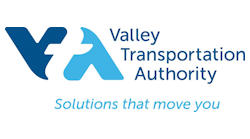One word to describe yourself: Energetic
Alma Mater: New York University
Fast fact about yourself: I love traveling and whenever I travel to a new country or a place, my family and I try to use public transportation as much as possible.
What’s your best experience on transit and what made it memorable? If you want to travel coast to coast in the beautiful country that is the United States, there are many ways to do it. For me, taking Amtrak's California Zephyr from San Francisco, Calif., to Chicago, Ill., and then the Lake Shore Limited from Chicago to New York, is the perfect way to make the journey. It was one of the most beautiful train trips I have taken in my life. The journey includes climbing through the heart of the Rockies and the snow-capped Sierra Nevadas, and then traveling along the southern shore of Lake Michigan, the Mohawk River and the Erie Canal, following a famous Native American highway.
Sneha George, P.E., PMP, is a certified professional electrical engineer with more than 11 years of experience in Infrastructure design and project management and is currently the system design engineer for the Santa Clara Valley Transportation Authority (VTA) in Santa Clara, Calif. A deep-seated passion for environmental sustainability sparked her drive to bring real and transformative impact to the public transportation sector.
She started her career with the Metropolitan Transportation Authority New York City Transit. As a young engineer on the team, she built a BIM/CADD library of electrical engineering and design tools. The library, utilized by a team of more than 200 engineers, significantly enhanced engineering productivity and streamlined project workflows.
Encouraged by the tremendous impact of her work, George was put in charge of streamlining the opening of the Mother Clara Hale Bus Depot, which accommodates more than 150 buses. Charged with identifying the root cause of frequent power outages, she meticulously analyzed numerous coordination studies and short circuit calculations. She carefully rectified the complicated problem, resulting in substantial cost savings of millions of dollars.
Driven by her passion for solving complex public transportation challenges, George ventured into managing large-scale projects, including the 9.4-mile 7 Line-Steinway Tube restoration project. Tasked with addressing structural issues related to water infiltration and modernizing the signal system through the implementation of communication-based train control (CBTC), George played a pivotal role in overseeing the project's execution. Her responsibilities encompassed managing contractors on-site, supporting testing and commissioning of CBTC systems, and performing track upgrades to accommodate updated interlockings and CBTC systems.
Another significant project George delivered was the WTC Cortlandt Street Station rehabilitation project. Severely damaged during the 9/11 attacks, the original station required extensive rehabilitation. George collaborated closely with contractors to coordinate the demolishing and replacement of track slabs, crossties and more than 2,400 feet of rail. Additionally, she oversaw the integration of communications, mechanical and maintenance spaces, ensuring the successful revitalization of the station.
Now at Santa Clara VTA, George has advocated for numerous initiatives aimed at reducing environmental impact and promoting eco-friendly practices. She was the lead project engineer for Santa Clara VTA's first pilot project to introduce electric buses to the fleet. George led the team to design the optimal electrical infrastructure, ensuring seamless integration of chargers while considering future expansion needs. Additionally, George championed the installation of solar panels in the Santa Clara VTA facilities and is currently leading the implementation of electric vehicle charging infrastructure at all Santa Clara VTA facilities.
George is entrusted with leading a variety of high-impact projects, including spearheading Santa Clara VTA's rehabilitation of Traction Power Substation to enhancing the safety and security of the light-rail system. She recently led a key initiative to implement Laser Intrusion Detection Systems and Thermal cameras along light-rail corridors to mitigate accident risk.
Her contributions extend beyond project management, as George actively participates in professional associations such as the American Public Transportation Association (APTA) and IEEE VTS committees. Recognizing the importance of mentorship, George dedicates her time to guiding and supporting young professionals entering the industry.
Outside of work, George remains a staunch advocate for environmental sustainability in her community. She enthusiastically supports the importance of public transportation and advocates for lifestyle changes that contribute to environmental conservation, such as reducing food waste, composting and utilizing public transportation whenever possible.
Is there a specific experience that led you to where you are today?
Growing up, public transportation was always a part of my life. When I moved to New York away from my family, the metro made my life much easier, making me feel very independent. I understood that, just like me, it empowers everyone.
I never had to think about driving because most places were serviced by the metro and the service only improved over the years. This experience made me realize how important public transportation is to the community and the opportunities it provides, especially to disadvantaged communities.
What do you enjoy most about your job?
Service has always been a value my dad instilled in both my sister and me. By working in transit, I not only get to serve disadvantaged communities, but I also feel we can get one step closer to solving the climate crisis by encouraging more people to use transit. Building efficient transit systems is the key and as an engineer, this is my job, which gives me great satisfaction.
Additionally, with most agencies moving towards zero-emission vehicles, I get to be part of one of the most important innovations in our industry. It is incredibly gratifying to be part of both the successes and the failures of this exciting new chapter in mass transit.
What’s the most challenging part of your job?
As an engineer, I manage many complex projects. When a project transitions from the design phase to the construction phase, we find that design often only captures 60 to 70 percent of the actual field conditions. This means that when construction begins, there are many anomalies to address.
Additionally, stakeholders sometimes request more than was initially asked for during the design phase. All of this can lead to change orders and scope creep. Negotiating with contractors and stakeholders to ensure they understand the common goal and the importance of keeping the project on schedule and within budget can be challenging but it is also a valuable learning experience.
Accomplishment you’re most proud of and why?
I am proud to have been part of the MTA New York City’s Cortlandt Street Station rehabilitation project on the No. 1 subway line, which was destroyed in the Sept. 11, 2001, terrorist attack on the World Trade Center. Whenever someone I know visits New York, I encourage them to visit the station I helped rebuild.
Another significant achievement was the demolition of one of the buildings at the Santa Clara VTA Yard. This was an emergency project and I was asked to put together the electrical plans and specifications package with only two days' notice. Not only did I successfully complete the package, but I am also proud that very few changes had to be made during construction.
Best advice/tip/best practice to share from your area of expertise?
Communication is one of the key mantras for success, whether at work or in personal life. Good communication with your team, colleagues or stakeholders is essential.
Additionally, having good mentors is crucial. Throughout your career, there will be moments when you are unsure of what to do next and a mentor can provide valuable guidance. I was fortunate to find mentors both within and outside my organization. Finally, always seek feedback to avoid being blindsided.

Brandon Lewis | Associate Editor
Brandon Lewis is a recent graduate of Kent State University with a bachelor’s degree in journalism. Lewis is a former freelance editorial assistant at Vehicle Service Pros in Endeavor Business Media’s Vehicle Repair Group. Lewis brings his knowledge of web managing, copyediting and SEO practices to Mass Transit Magazine as an associate editor. He is also a co-host of the Infrastructure Technology Podcast.




